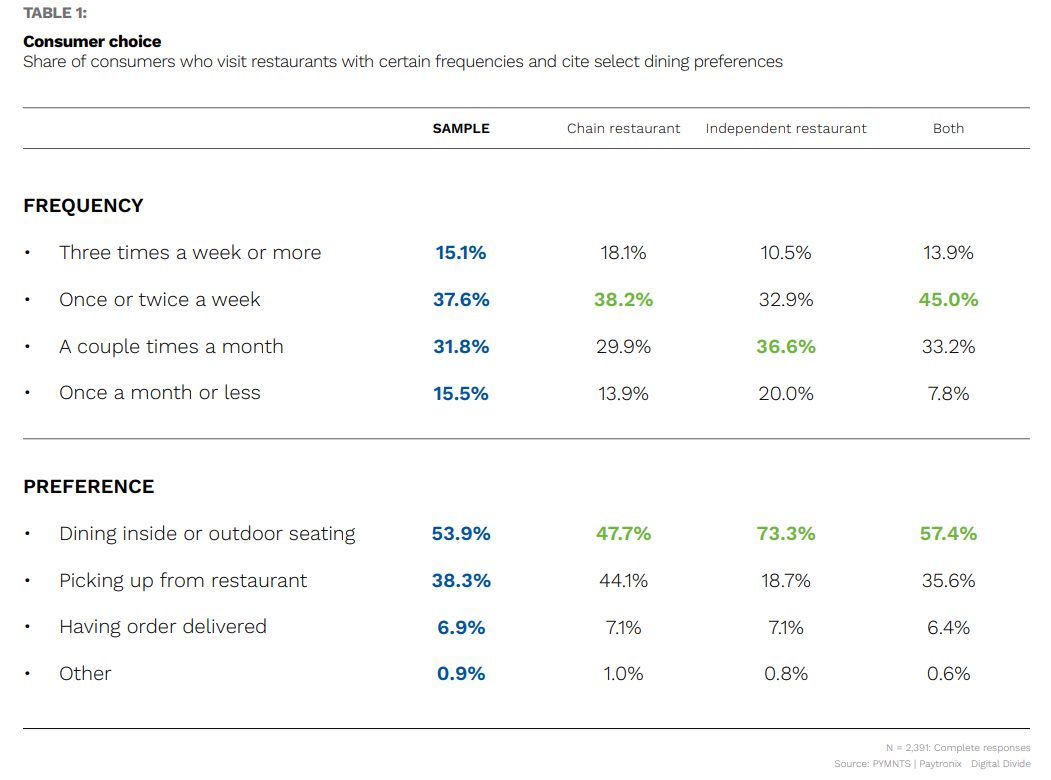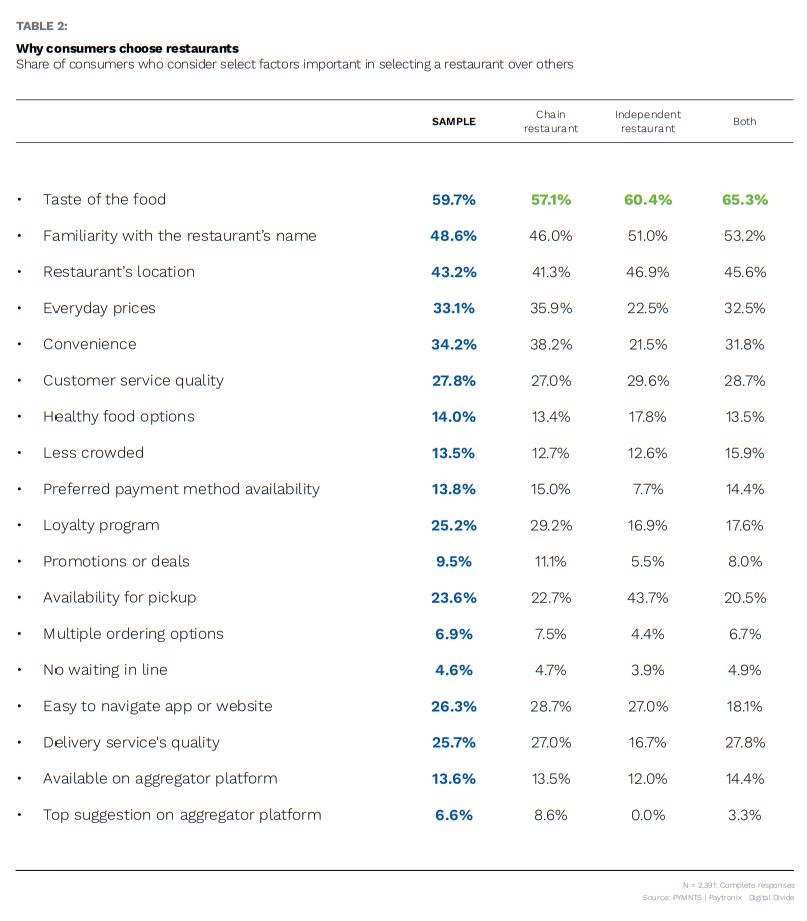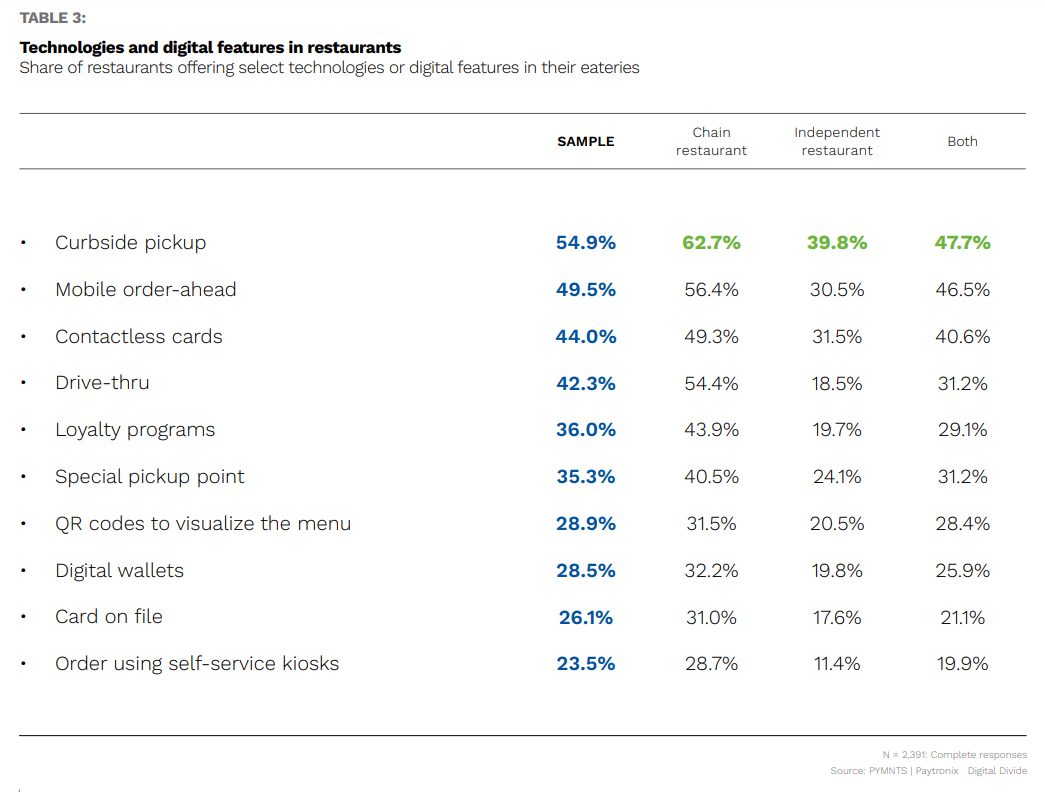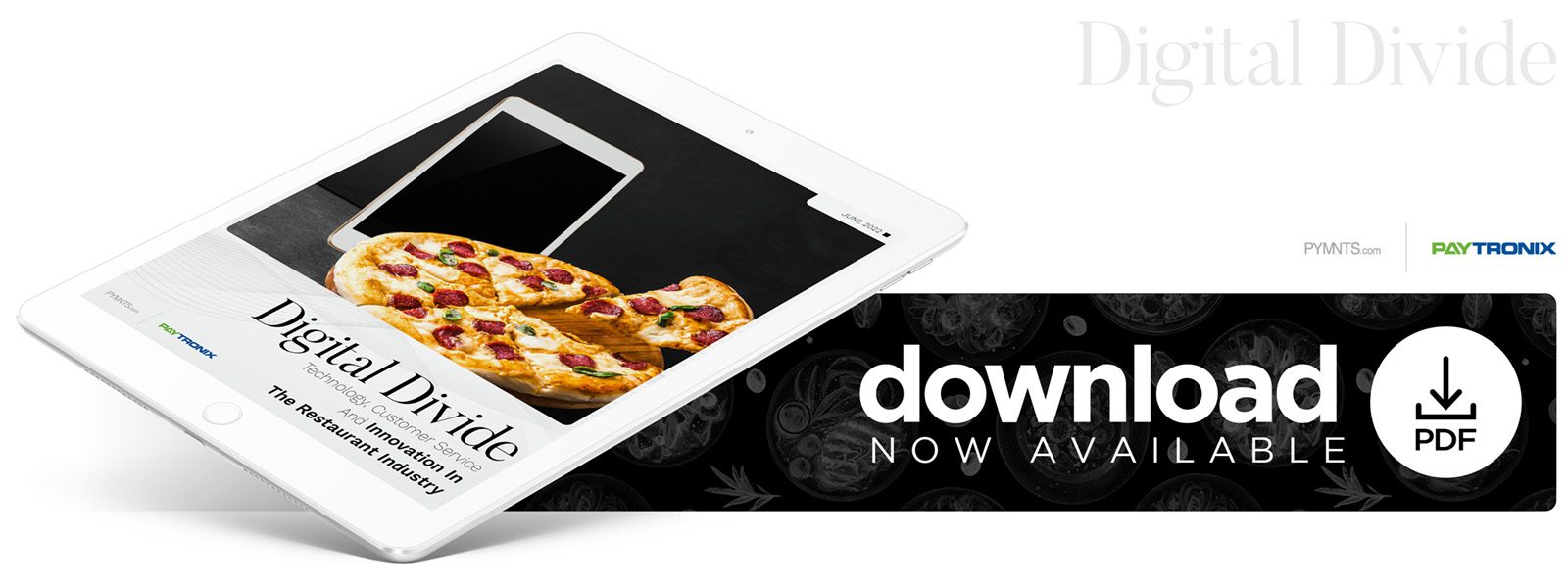The Data Point: Chains Take the Cake With 60% of Restaurant Consumers
There are folks who prefer quick-service restaurants (QSRs) to independent eateries, while others can’t say no to a five-course meal with fine tableside service. It takes all kinds to make a consumer base, and dining serves them all, catering more now to their unique preferences.
For The Digital Divide: Technology, Customer Service And Innovation In The Restaurant Industry, a PYMNTS and Paytronix collaboration, we surveyed nearly 2,400 consumers to discover what services, features and technologies are preferred by different diners.
It’s a riveting dive into preference, touching on everything from waitstaff likes and dislikes to dining’s future in the Metaverse. Here, we call out three data points that illustrate what consumers are prioritizing in the restaurant types they like to frequent.
Get the Report: The Digital Divide: Technology, Customer Service And Innovation In The Restaurant Industry

- 60% of consumers visited only chain restaurants in the prior 30 days
With six in 10 respondents saying they had dined at chain restaurants exclusively in the month before being surveyed, that beats the share of independent restaurant clients by four to one.
Given their popularity and traffic, we found chain restaurants heavily engaged in multiple channels to reach a dedicated consumer base. Per the study, “Chain restaurants are more likely to generate significant shares of sales through multiple channels, whereas independent eateries mostly earn revenue from on-site dining. Similar shares of chain-restaurant enthusiasts take food to go or dine in, 44% and 47%, respectively, and a large share of independent eatery enthusiasts dine in, 73%, which is nearly four times the 19% that eat their food off-site.”

- 38% of chain-restaurant-exclusive diners value convenience when choosing chains
Not surprisingly, chain enthusiasts are there largely for convenience. Independent restaurant diners place far lower importance on convenience as a factor in the choice.
We found that 38% of chain-restaurant-exclusive consumers “value convenience when choosing where to eat, and 10% said they are chiefly motivated by convenience. These figures drop significantly for independent-restaurant-exclusive consumers: 20% value convenience and just 1% of these consumers say it is their primary motivation. These differences represent the widest gaps between what chain enthusiasts and independent-restaurant-only patrons value.”

- The most popular feature of restaurants is curbside pickup, now offered by 55%
Pandemic necessity drove the creation and adoption of contactless home delivery, BOPIS and curbside pickup, perhaps in no sector more than restaurants.
According to the latest edition of The Digital Divide, “The most popular features restaurants offer are curbside pickup, implemented by 55% of all restaurants; mobile order-ahead, implemented by 50%; and contactless card support, implemented by 44%.”
We found that 63% of chain restaurants now offer curbside pickup, compared to 40% of independent restaurants.
Get the Report: The Digital Divide: Technology, Customer Service And Innovation In The Restaurant Industry